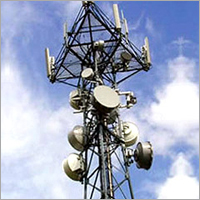  The just concluded 2G auction was a sharp contrast to 2010 3G bidding which lasted more than one month. With auction failing to stretch beyond two days this time, the government managed to earn only Rs 9,407.64 crore.
Worse, only 101 of 144 blocks got bids with Delhi, Mumbai, Karnataka, Rajasthan circles going unsold. 3G Auctions in 2010 lasted for over a month, and fetched earned Rs 67,000 cr.
Bharti Airtel, Vodafone, Telewings, Videocon, and Idea Cellular participated in the auctions. While Videocon and Idea won spectrum in seven circles, Bharti Airtel won in one circle while Vodafone got 14 circles. While Telewings got spectrum in six circles.
Surprisingly, Bihar went for a price higher than the base set before the bids. Idea, Videocon, Vodafone and Telenor competed for 11 blocks of 1.25 MHz spectrum.
The total earnings were far below Rs 40,000 crore, which was subsequently revised to Rs 30,000 crore.
Delhi and Mumbai, together account for acounted for 40 per cent of the base price of Rs 14,000 crore fixed by the government for 5 MHz of 2G spectrum.
“In all, 101 out of the 144 blocks of spectrum on offer got bids. Metro cities of Delhi and Mumbai went unsold”, said telecom minister Kapil Sibal the process ended on Wednesday.
The auctions were held following the Supreme Court’s February 2 verdict cancelling all the 122 spectrum licences allotted during the tenure of the former telecom minister A Raja.
Sibal refused to comment on the CAG report saying that he does not want to comment on any institution but the facts are in front of the nation.
“The nature of the market in 2008, 2010 and 2012 are very different. It is very dangerous to extrapolate and take the situation in 2010 and apply in 2008 and similarly apply 2012 to 2008,” he said.
He said that the government would try to sell the spectrum that could not find takers in this auction. “we will try to do before the start of the next financial year. We can only auction the spectrum that is left after this auction,” said Sibal.
Industry lobby COAI said that the artificial scarcity created by holding back spectrum combined with the high reserve price dampened any enthusiasm for aggressive bidding by the operators.
|